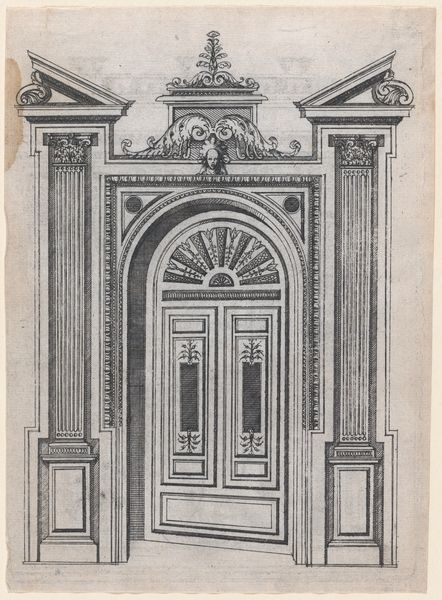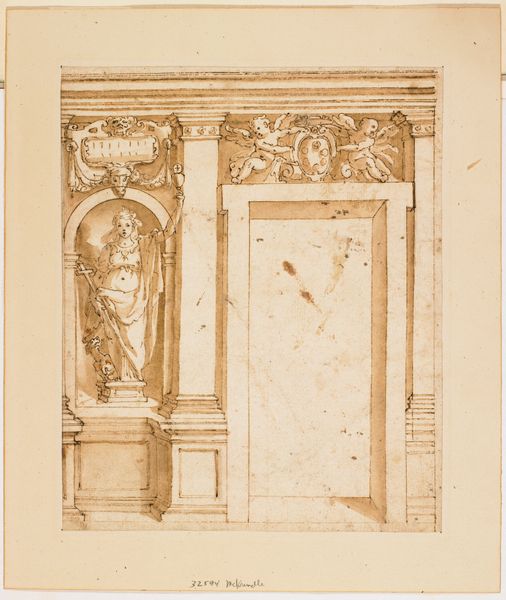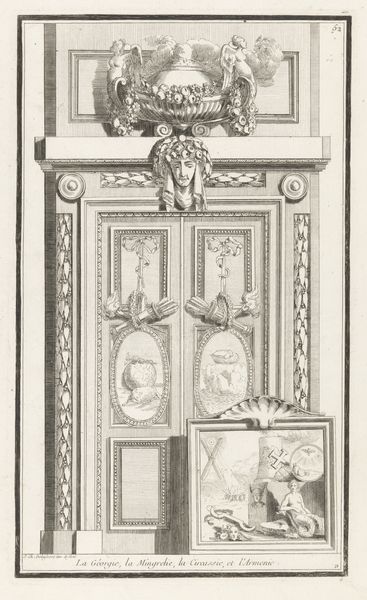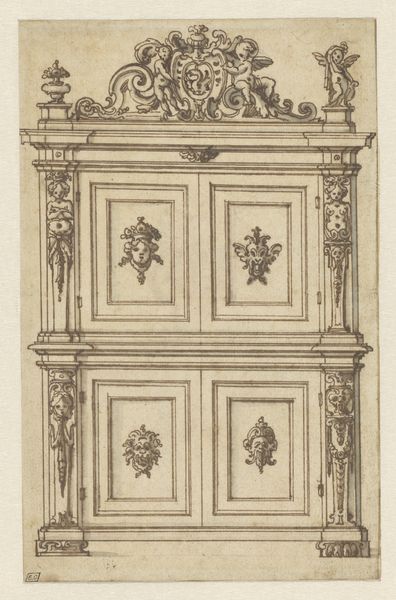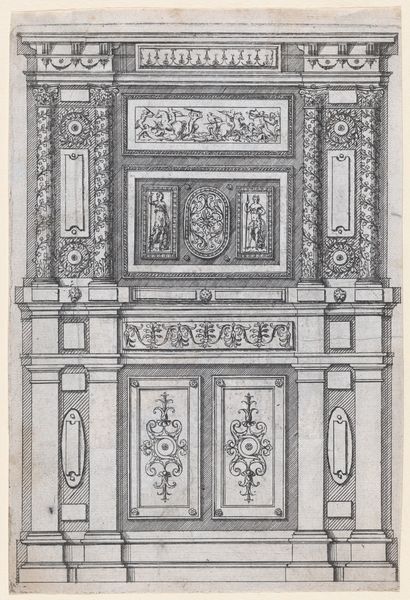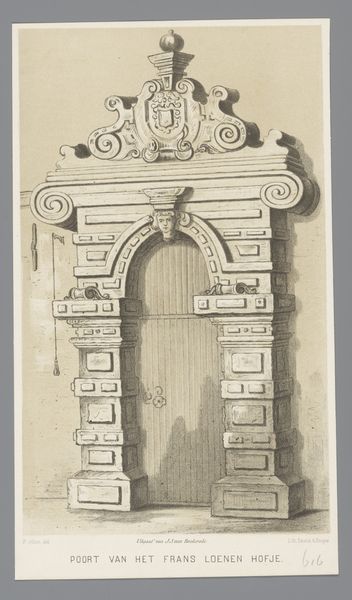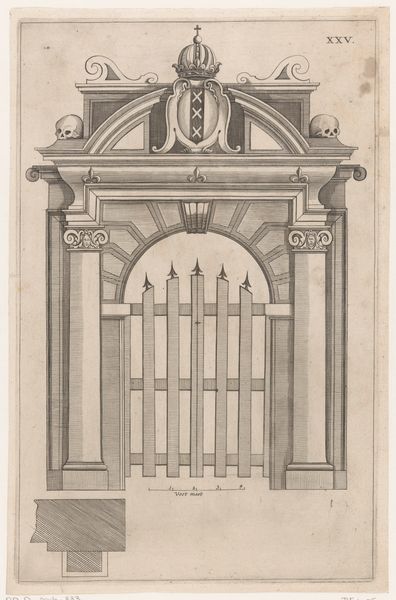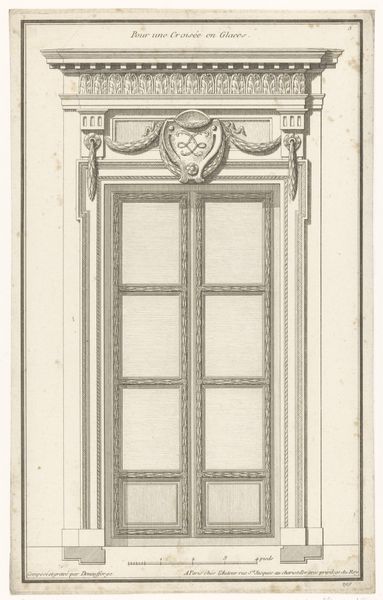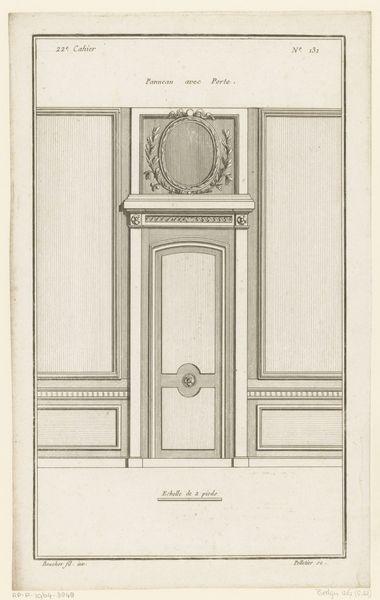
drawing, print
#
drawing
#
aged paper
#
toned paper
#
light pencil work
# print
#
pencil sketch
#
old engraving style
#
sketch book
#
personal sketchbook
#
pen-ink sketch
#
sketchbook drawing
#
sketchbook art
Dimensions: Sheet: 7 11/16 × 5 5/8 in. (19.5 × 14.3 cm)
Copyright: Public Domain
Curator: Welcome, everyone. We are standing before Jacques Androuet Du Cerceau's "Design for a Door Frame," created sometime between 1565 and 1570. This drawing offers us insight into the architectural aesthetics of the period. Editor: It feels meticulously planned yet airy; the precision of the lines coupled with the aged paper creates a kind of ethereal, grand statement. Curator: It’s part of a broader movement. The aristocracy were solidifying their power. Structures such as these, and the doors they framed, often literally represented who was in, and more importantly, who was out. These architectural details became powerful status symbols during periods of religious and social upheaval. The intricate detail was meant to overawe. Editor: Notice the Doric columns—those are clearly a visual shorthand for strength, stability. The symmetry is undeniable, and how it pulls the eye. Those cherubic faces almost mock you as you stare at the door. The artist almost dares to make the composition itself the primary spectacle. Curator: Yes, there's also a complex interplay here. Architectural designs became part of how dynasties or individual rulers projected an image. The door is not merely a portal. It's a declaration. Who lived in this home had considerable importance for shaping social ideas about power and success. The design itself had to reflect it. Editor: This interplay between the sketch as document and the sketch as an ideal! You realize how carefully staged a thing like that had to be to elicit those meanings! From the layout to even where and how figures would pass through—carefully planned theatre that served as a language onto itself. Curator: Absolutely. Consider what narratives these spaces implicitly reinforce or attempt to subvert. They served both the owner and its audiences. It begs a further question about who ultimately controls narrative, both in their day, and looking back today. Editor: Thinking about the design elements and then thinking about the power, I leave here seeing the artistry through Du Cerceau’s architectural vocabulary—in his composition, balance, and detail of each component. Curator: Agreed. It has a historical narrative beyond just technique—it showcases design as social statement. An opportunity to consider doors beyond just their purpose.
Comments
No comments
Be the first to comment and join the conversation on the ultimate creative platform.
